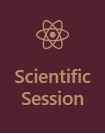Ramadan Fasting and Saliva Characteristics
DOI:
https://doi.org/10.18196/imunity.v1i1.3Keywords:
fasting, Ramadan fasting, saliva composition, saliva biochemistryAbstract
Ramadan fasting is the absence of swallowing or limiting food and drink for a certain period, usually having a duration of between 28 and 30 days with an average period of 12 hours. One of the first biological fluids to experience changes in eating habits and changes to the environment or physics in the oral cavity during fasting is saliva. Changes that can occur are a decrease in saliva production which will result in a decrease in the function and components of saliva in the oral cavity. The purpose of writing this review is to determine the effect of fasting on saliva characteristics. This Literature Review was prepared using various sources, most of which are within the last 5-10 years. The literature search used as a data source used Google Scholar and PubMed. The keywords used are "saliva", "fasting", "ramadan fasting", "salivary flow", "saliva composition", "biochemistry of saliva". Changes in saliva characteristics during fasting include a decrease in saliva flow rate, complaints of dry mouth or xerostomia as well as changes in saliva composition, namely a decrease in inorganic components of saliva such as phosphate and calcium. During Ramadan fasting there is a risk of decreasing flow rate which in turn can affect the condition of the oral cavity.
References
Bragazzi NL. Ramadan fasting and chronic kidney disease: A systematic review. J Res Med Sci. 2014 Jul;19(7):665–76.
Longo VD, Mattson MP. Fasting: Molecular Mechanisms and Clinical Applications. Cell Metab. 2014 Feb;19(2):181–92.
Khaleghifar N, Sariri R, Aghamaali M, Ghafoori H. The Effect of Ramadan Fasting on Biochemistry of Saliva. Vol. 4, Journal of Applied Biotechnology Reports Original Article Journal of Applied Biotechnology Reports. 2017.
Sariri R, Varasteh A, Erfani A. Alternations in salivary glucose during ramadan fasting. Health N Hav. 2010;02(07):769–72.
Selviani Y, Mas’ud NW, Fitri ANI, Ferry AB, Lestari RF, Samad R. Inorganic component of saliva during fasting and after fast break. Journal of Dentomaxillofacial Science. 2016 Aug 31;1(2):125.
Semiyari H, Farhadi S, Ali Taheri R, Owlia P. Comparison of Salivary Micro Flora of Fasting and No Fasting Persons. Research Journal of Biological Sciences. 2010 Aug 1;5(8):553–5.
Sariri R, Varasteh A, Erfani A. Alternations in salivary glucose during ramadan fasting. Health N Hav. 2010;02(07):769–72.
Wirawan E, Puspita S. Hubungan pH Saliva dan Kemampuan Buffer dengan DMF-T dan def-t pada Periode Gigi Bercampur Anak Usia 6-12 Tahun. Insisiva Dental Journal: Majalah Kedokteran Gigi Insisiva. 2017;6(1).
Marcelina M, Samad R. Profil saliva pada penyirih di Kecamatan Rembon Kabupaten Tana Toraja Salivary profile of betel quid tobacco chewers in District of Rembon, Tana Toraja. Journal of Dentomaxillofacial Science. 2013 Jun 30;12(2):109.
Benn AML, Thomson WM. Saliva: an overview. N Z Dent J. 2014 Sep;110(3):92–6.
Holmberg K V., Hoffman MP. Anatomy, Biogenesis and Regeneration of Salivary Glands. In 2014. p. 1–13.
Thomas E, Tayab T, Rai K, Kumari V. Effect of Chewing Paneer and Cheese on Salivary Acidogenicity: A Comparative Study. Int J Clin Pediatr Dent. 2012 Apr;5(1):20–4.
Pachori A, Kambalimath H, Bhambhani G, Malhotra G. Evaluation of Changes in Salivary pH after Intake of Different Eatables and Beverages in Children at Different Time Intervals. Int J Clin Pediatr Dent. 2018 Jun;11(3):177–82.
Seethalakshmi C. Correlation of Salivary pH, Incidence of Dental Caries and Periodontal Status in Diabetes Mellitus Patients: A Cross-sectional Study. JOURNAL OF CLINICAL AND DIAGNOSTIC RESEARCH. 2016;
Loke C, Lee J, Sander S, Mei L, Farella M. Factors affecting intra‐oral pH – a review. J Oral Rehabil. 2016 Oct 30;43(10):778–85.
Bardow A, Moe D, Nyvad B, Nauntofte B. The buffer capacity and buffer systems of human whole saliva measured without loss of CO2. Arch Oral Biol. 2000 Jan;45(1):1–12.
Trepanowski JF, Bloomer RJ. The impact of religious fasting on human health. Nutr J. 2010 Dec 22;9(1):57.
Patterson RE, Sears DD. Metabolic Effects of Intermittent Fasting. Annu Rev Nutr. 2017 Aug 21;37(1):371–93.
Azizi F. Islamic Fasting and Thyroid Hormones. Int J Endocrinol Metab. 2015 Apr 25;13(2).
Shaeesta KB, Prabhuji ML, Shruthi JR. Ramadan fasting and dental treatment considerations: a review. Gen Dent. 2015;63(4):61–6.
Javadzadeh Bolouri A, Hassan Zarrabi M, Taheri M, Delavarian Z, Bolouri JA. Islamic Fasting and Oral Health and Diseases. Vol. 2, J Fasting Health. 2014.







